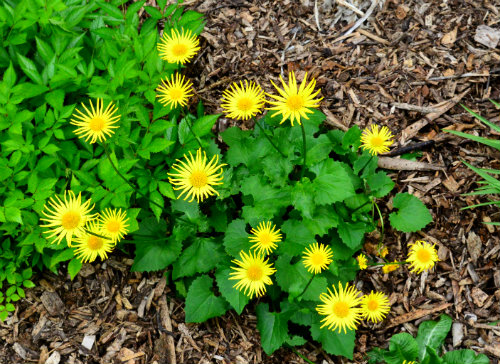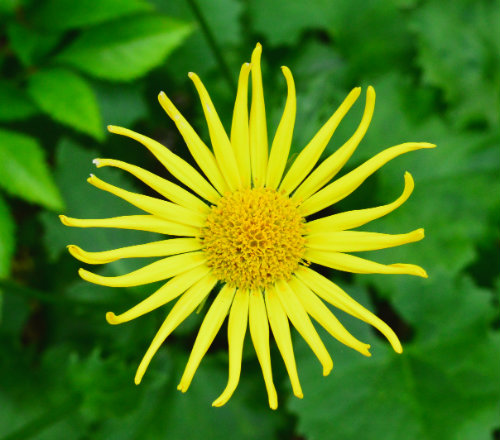Plant of the Month for June, 2018

Doronicum orientale 'Finesse'
(dor-ON-ih-kum or-ee-en-TAY-lee)
General Information:
Doronicum orientale is a fairly common plant but the better option, a cultivar called Finesse, is not found in a lot of gardens. It is a lovely yellow colour and fills that blooming void between spring bulbs and peonies. Easy to grow, and reliably hardy in many zones.

Doronicum orientale ‘Finesse’:photo by Robert Pavlis
Common names for the species include leopard’s bane and oriental false leopards bane. All parts of the plant are poisonous to humans, if ingested. In my zone 5, full sun garden, which does not normally get watered, the plant dies back and goes underground by mid-summer.
The flowers look like stars due to the very narrow petals which are a good identifier for Finesse. Other cultivars have wider petals giving them the more common daisy look.

Doronicum orientale ‘Finesse’:photo by Robert Pavlis
Other cultivars include:
- Species – taller at about 70 cm (2.5 ft)
- Leonardo – very compact, 25 cm (10 in)
- Little Leo – semi-double, 40 cm (16 in)
There is also a cultivar called Magnificum, but the descriptions for this seem to match the wild species, except that it might be slightly shorter.

Doronicum orientale ‘Little Leo’:photo by Robert Pavlis
For a very detailed look at the genus have a look at Systematics of Eurasian and North African Doronicum.
Life Cycle: perennial
Height: 45 cm (18 in)
Bloom Time: spring
Natural Range: S. E. Europe, the Balkans and much of Turkey
Habitat: mesic meadows, and along tree lines
Synonyms: Doronicum caucasicum
Cultivation:
Light: part shade to full sun
Soil: well drained
Water: drought tolerant once established, will go underground if too dry
USDA Hardiness Zone: 3 - 8
Propagation: seed (comes true from seed), division
Seedex availability (ORG&HPS annual Seed Exchange): occasionally
Germination Tips:
Contributions to this page were made by: Robert Pavlis
